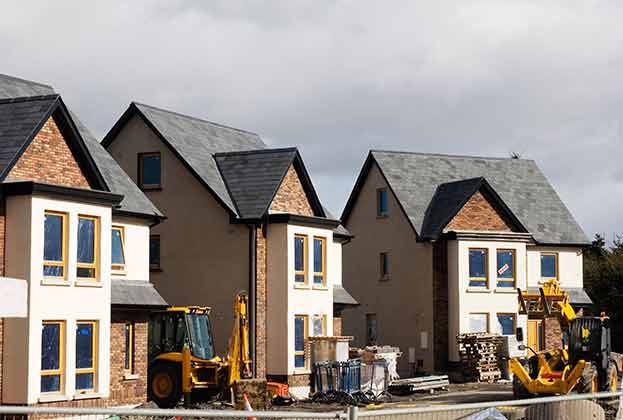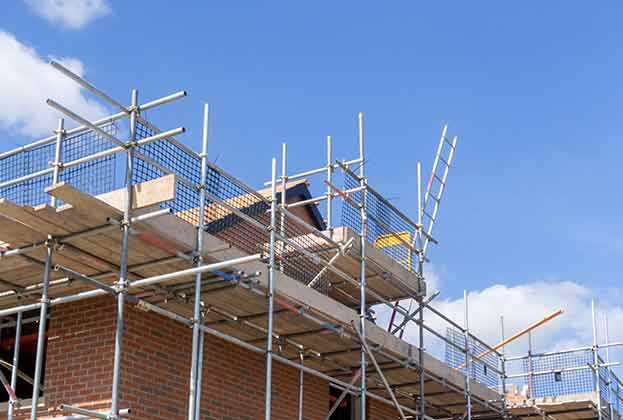The NPPF has played a key role in enabling more housebuilding, but reform could ensure the planning system delivers the right type of homes without sacrificing overall delivery
Is the planning system delivering an appropriate mix of sites that can meet both the overall housing need figure, and deliver a range of tenures and types of housing?
Since the introduction of the National Planning Policy Framework in 2012, the number of homes gaining full planning consent in England has seen sustained growth, rising from 195,300 homes in 2012 to 288,400 in 2022. The result has been a subsequent increase in delivery – the number of homes being built increased from 137,900 to 252,500 over the same period.
This increase was partly driven by the market recovery after the global financial crisis, and the subsequent increase in development activity. Developers were also given more confidence to build their supply pipelines by the introduction of Help to Buy in 2013. The shift away from the 'brownfield-first' approach of PPG3 and PPS3, coupled with the introduction of the requirement to demonstrate a five-year housing land supply, resulted in LPAs treating large edge of settlement greenfield schemes more favourably, which has been a key component in driving the growth in housing delivery.
The most recent planning consents data has shown a drop in supply back to levels last seen in 2015. This drop likely has several causes. It is partly a delayed consequence of reduced development activity during the Covid lockdowns, and subsequent reduced need to replenish land pipelines. Recent housing market volatility has also prompted developers to become more cautious. However, the primary factor is likely to be the uncertainty in planning policy since the publication of the “Planning for the Future” White Paper in August 2020, and subsequent slowdown in local plan progress. (see Planning in Numbers [link to article 1] for further details.) This drop-off in consents needs to be reversed if there is to be any chance of reaching the annual target of 300,000 new homes in England.
Where is the potential for growth?
The increase in the number of consents being granted since 2012 has not been uniform across different site types. One of the clearest trends over the last decade is a shift towards larger sites being allocated. In 2011, before the NPPF was adopted, the average site in local plans adopted that year was about 35 hectares. After the NPPF was introduced, sites grew rapidly in size: between 2012 and 2016, the average site in new local plans was 60 hectares. Despite some variation in the following years, the average site continues to gradually increase in size, to 69 hectares in allocations adopted between 2017 and 2021.
A similar pattern can be found in the number of sites gaining full consent. In 2012, sites with capacity for over 1,000 homes comprised less than 2% of all consents granted. That proportion had risen to 10% by 2020. In contrast, the number of homes being delivered on smaller sites has fallen every year since 2017. In 2022, the number of homes consented on sites with capacity for under 100 homes was lower than it was in 2013, even though the total number of homes consented had increased by 32%. Housing land supply is therefore becoming increasingly concentrated in a smaller number of larger sites.
An over-reliance on windfall sites?
Under paragraph 69 of the NPPF, LPAs are required to deliver 10% of their housing need on sites of under 1 hectare, to provide sites suitable for small and medium developers (SMEs) and ensure a good mix of sites. Are LPAs actually meeting this target?
Between 2012 and 2021, just 3% of potential homes in new allocations were on sites of 1 hectare or less. The situation has worsened since the introduction of the NPPF. In 2011, 6% of potential homes were on new allocations of 1 hectare or less, a level that was only matched once since, in 2013. Evidence from emerging plans does not suggest this is likely to change in the coming years.
Between 2012 and 2022, only 27% of LPAs adopted enough new sites of less than 1 hectare that they could potentially meet 10% of their housing need. This might indicate an over-reliance on ‘windfall’ sites, to meet the small sites requirement, rather than proactively planning for a mix of sites that could be built out by a range of developers.
Brownfield Registers should play an important role in building the pipeline of small sites within urban areas. However, the data held by many LPAs is not currently fit for purpose, with many registers containing duplicates, sites already under construction, and sites that the local authority has already assessed as not suitable for housing. Improving the quality of this data and combining it with high-level viability studies at an early stage would help to unlock a broader mix of sites.
Implications
LPAs should consider the opportunity that the National Development Management Policies (NDMP) may bring to reduce the complexity of local plans, which should focus on local design and allocations policies. Appropriate densification of urban areas through specific identified smaller sites may help increase their proportion and reduce the reliance on windfalls. Smaller opportunities might also exist through positive neighbourhood planning.
In respect of the NPPF, the government should be mindful of the progress made since 2012 in proposing any final revisions to national policy, alongside NDMPs which re-enforce the presumption in favour of sustainable development.
Want to find out more about Planning and Development? Read our latest insights here.
Read the articles within Planning Research 2023 below.
.jpg)

